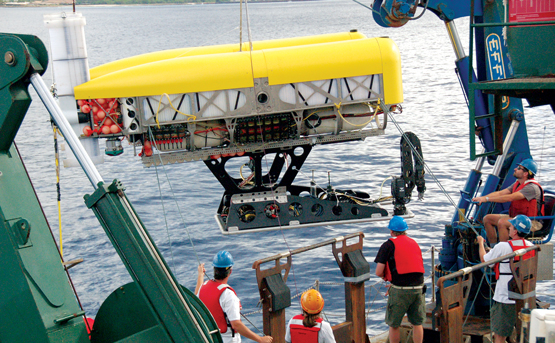Deep-sea ocean vehicle lost on six-mile-deep dive witnessed by Whitman biology professor

The remotely operated submarine called Nereus undergoes testing near Hawaii.
In the end, the pressure was too much for Nereus, the deep-sea submersible crawling through the ocean’s deepest trenches.

Professor Paul Yancey
The Nereus, a remotely operated vehicle, was lost at 9,990 (6.2 miles) as it explored the Kermadec Trench, northeast of New Zealand, on May 10.
Whitman College Professor of Biology Paul Yancey was on the expedition ship when the Nereus was lost. One of the scientists using Nereus for research of the ocean’s hadal regions (trenches 6,000 to 11,000m deep), Yancey said the ROV likely imploded under pressure as great as 16,000 pounds per square inch.
"We are, of course, very sad here on the ship,” Yancey said.
“At least Nereus got great videos with new species and ecosystem information from up to 10,000m (33,000 ft).”
Before this doomed expedition, the $8 million robot had successfully traveled to Challenger Deep in the Mariana Trench, the deepest point in the ocean, and explored the world’s deepest known hydrothermal vents along the Cayman Rise in the Caribbean Sea.
Yancey said that on its first Hades cruise, Nereus brought back to the surface specimens of animals previously unknown to science, as well as seafloor sediment that could potentially reveal the physical, chemical and biological processes that shape the ecosystems in the ocean’s trenches.
"We got a lot out of the Nereus dives that did work, even new discoveries at the deepest point where Nereus was filming for six-and-a-half hours before it went silent,” Yancey said.
The Deep Submergence Lab at the Woods Hole Oceanographic Institution built Nereus in 2008 to descend to the deepest parts of the ocean and operate either autonomously or to be controlled remotely from the surface.